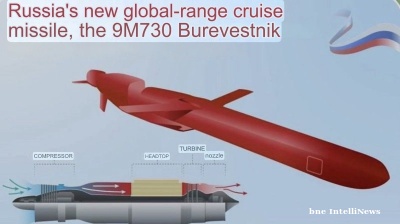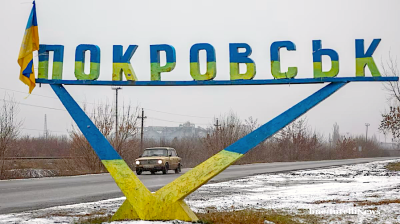With the fears of a Russian invasion of Ukraine mounting, many of its allies have ramped up arms deliveries to the embattled nation – but not all.
Over just the last few days, the Baltic nations, the Czech Republic, the Netherlands, and Canada said they were ready to provide military aid to Ukraine and several of these countries have already started delivering weapons to Kyiv. Turkey since last year has provided the Ukrainian military with an unknown number of Bayraktar T2B armed drones and is working with Kyiv to establish a drone assembly plant in Ukraine. Moscow objected after one of the drones was used in an attack on separatists by Ukraine last October.
There has been a marked change in tone when it comes to supplying Ukraine with weapons in the last year. The Obama administration was very reluctant to sell Ukraine lethal weapons, fearful of getting sucked into a proxy war with Russia in Ukraine’s disputed eastern region of Donbas.
That changed dramatically under US president Donald Trump, who signed off on the first delivery of lethal defensive weapons to Ukraine as part of $350mn in military aid earmarked for Ukraine in 2017.
In the last fwe years Ukraine has invested heavily into its military, which has become a much more effective and better equipped fighting force.
Kyiv has been pushing for more powerful weapons from the US since 2014 to use in its campaign against the separatist Donbas region, where rebels are receiving support from regular Russian army troops, according to multiple reports. In particular, Kyiv wanted the “tank-busting” Javelin missiles as Russia has reportedly sent motorised armour into the conflict theatre in Donbas.
“Send us weapons, including lethal weapons, not blankets,” President Petro Poroshenko famously told Congress in an address in 2015. Obama refused. Trump acquiesced.
The US started sending circa $250mn worth of weapons a year and has now delivered a total of $2.7bn worth of hardware since 2014, according to recent reports.
The specific weapons supplied by Trump and now US President Joe Biden include air and coastal defence radar, naval mine and counter-mine capabilities, and littoral and coastal defence craft, according to a statement by US Senator Rob Portman and founder of the Ukraine Senate Caucus.
“These additions reflect the Ukrainian military’s most pressing needs that have not been covered under previous authorisations, such as anti-tank weapons, secure communications and counter-artillery radar,” a statement made at the time of Trump's decision to reverse the “no lethal weapons policy in 2017 said.
But as military tensions between Russia and Ukraine grew in 2021 the volume of weapons deliveries has accelerated.
The Kremlin has made it clear that it is very unhappy with the expanding weapons deliveries. Russian Foreign Minister Sergei Lavrov accused the West of “pumping Ukraine full of weapons” in his press conference following a meeting with US Secretary of State Antony Blinken on January 21 in Geneva, which the Kremlin sees as a provocation. It is also worried that Kyiv is planning to abandon the Minsk II peace process and will try to retake control of Donbas by force, which could provoke an open war with Russia.
The Kremlin has always objected to Ukraine’s proposed membership to Nato, but more recently it seems to fear that Ukraine is slowly being made into a de facto platform of operations for Nato, even if the country has not been offered Nato membership, what Dmitri Trenin, director of the Carnegie Moscow Center, called a “permanent aircraft carrier permanent moored off the border of Russia.”
UK & EU
UK Defence Secretary Ben Wallace announced that Britain was urgently sending Ukraine “light armour defensive” weapons – the Swedish-British NLAW system – to counter growing fears of a Russian invasion. A Royal Air Force’s Boeing C-17 Globemaster III cargo plane flew from the UK to Kyiv on January 17 – by-passing Germany – bring some of these weapons to Ukraine.
Britain’s military aid has been ramped up in the last year. The UK signed off on a ten-year GBP1.3bn ($1.75bn) programme to modernise Ukraine’s navy last April and Wallace was in Kyiv again in December to extend the deal to include supplies of British-made weapons for the army in December.
And the rhetoric has been stepped up. “We, and our Allies, have legitimate and real cause for concern that the configuration and scale of the force being assembled, supported by Russian air and maritime long-range strike capabilities stationed in the region, could be used for the purpose of conducting a multi-axis invasion of Ukraine,” Wallace said in a strident statement to the House of Commons on January 17.
Wallace added that he didn't want to give Ukraine “false hope” that the UK would actually send in soldiers to aid Ukraine should Russia launch an invasion of the country, a sentiment repeated by both the US and Nato, but Wallace committed the UK to increasing military support for Ukraine.
“I can today confirm to the House that, in light of the increasingly threatening behaviour from Russia, and in addition to our current support, the UK is providing a new security assistance package to increase Ukraine’s defensive capabilities,” Wallace told the House of Commons.
In the same week Dutch foreign minister Wopke Hoekstra said The Netherlands were also ready to consider a Ukrainian request of assistance or vote in favour of sending weapons to Ukraine via Nato, although he added that Ukraine has not officially ask for this help yet.
Czechia’s Defence Minister Jana Cernochova also said on January 20 that the Republic was ready to boost Ukraine’s defensive capabilities, with arms deliveries. Czechia has a booming arms industry and has already supplied Ukraine with its high quality small arms and intends to expand this business. “The Czech Republic historically, politically, and in terms of alliances, has been on Ukraine’s side,” Cernochova said as cited by the Kyiv Independent. “If Ukraine needs aid, we will do everything possible to help.”
Cernochova is reportedly asking permission to provide Kyiv with an unspecified quantity of 152-millimeter artillery rounds, a serious component of field military power.
Slovakia’s populist rightwing government is not sending arms to Ukraine.
“At the moment, the defence ministry is not negotiating with Ukraine on the provision of military equipment," the Slovak defence ministry´s spokesperson Martina Koval Kakascikova said for Aktualne.
However, in the past Slovakia has repeatedly sent humanitarian aid to Ukraine from the interior ministry's stocks (back in 2017 and 2019), such as sleeping bags, electric heaters and medical supplies.
The risk of Slovakia being dragged into a potential conflict in neighbouring Ukraine has raised the political temperature in Bratislava. The Slovak parliament is currently discussing a defence co-operation agreement (DCA) with the US, which opposition parties are opposing, partly on the grounds that it could allow the US to use the country as a military base for operations in Ukraine.
Former premier Robert Fico has said that the DCA could allow Ukrainian insurgents to be trained in Nato’s eastern border with Ukraine, such as Poland, Romania and Slovakia, referring to an article by the New York Times.
As reported by the Slovak News Agency (TASR), Fico said that the specific DCA provisions stated that vehicles, vessels and aircraft of the US Armed Forces would be allowed to move freely in Slovakia. "Now, imagine how easy it will be to train a Ukrainian insurgent here and then transport them without any problems to Ukraine so that they can fight in a potential conflict," Fico was quoted by TASR as saying.
"Smer-SD doesn’t want any US bases in Slovakia, it is against the contents of the DCA, and definitely doesn’t want Ukrainian insurgents to be trained in the country," he added, stressing that this is a sufficient reason to trigger a public referendum on whether the Slovak citizens want "US military bases and the training of Ukrainian insurgents" on their territory.
Poland has also not offered any military help to Ukraine so far. Defence experts say that the country has little relevant equipment that it could spare.
Hungary, which has grown increasingly close to Russia under Prime Minister Viktor Orban, has also not offered any aid. Orban himself is even visiting Putin on February 1 to discuss bilateral ties.
In a statement, Hungary's united opposition has called on Orban to call off his visit, arguing that “such a ‘friendly meeting’” is "harmful and contrary to national interests" as it suggests that "Nato & EU member states are not united in rejecting Putin's proposals".
Over the last few days, Denmark has decided to send a frigate to the Baltic Sea and is also set to deploy four Feneraly Dynamics F-16 fighter jets to Lithuania “in support of Nato’s long-standing air-policing mission in the region.” Spain has joined the Nato naval deployments, and is also considering sending fighter jets to Bulgaria.
Nato has been conducting unscheduled naval exercises in the Black Sea all of last year, in face of Russia’s bitter protestations that the presence of Nato war ships in the sea is destabilising. The exercises came close to a crisis when the UK’s HMS Defender sailed through waters off the Crimea in June that Russia claims as its territory, under the principle of “right of innocent passage” that was widely seen as a deliberate provocation and a challenge to Russia’s claim of sovereignty over the peninsular.
France has already expressed its readiness to deploy troops on the ground to Romania under the NATO command. The Netherlands is sending two Lockheed Martin F-35 advanced fighter jets to Bulgaria.
And the Netherlands is also putting its Nato Response Force -- a warship and its ground forces -- on standby, the alliance’s high-readiness multinational force capable of rapid deployments for missions around the world, according to reports.
Baltics
Estonia, Latvia and Lithuania announced they will provide anti-armour and anti-aircraft missiles to Ukraine to help the country in the event of a possible Russian invasion in a joint statement on January 21.
"In light of Russia's increase in military pressure in and around Ukraine, the Baltic States have decided to answer Ukrainian needs and to provide additional defence-related assistance," the statement said. This aid will further enhance Ukraine's capability to defend its territory and population in case of possible Russian aggression.”
FGM-148 anti-tank missile systems, while Latvia and Lithuania declared sending FIM-92 Stinger man-portable anti-aircraft weapons to Kyiv. Estonia, bought 80 Javelin launchers and 350 missiles from the US in 2015. As these weapons systems are American-made the three Baltic states had to ask for, and received, clearance for the weapons transfer earlier in the week from the US.
Estonia has also promised to try and provide Kyiv with 122-millimeter field guns previously operated by Germany and Finland, but has run into problems with getting Germany’s permission for this sale.
Germany
Germany is unhappy with the build-up of weapons in Ukraine, which it sees as destabilising, and has come under increasing criticism, accused of actively supporting the Kremlin’s agenda of intimidating Ukraine, according to some.
The UK C-17 plane decided to fly around Germany on its way to Kyiv, later citing the difficulty in getting permission to fly weapons over the country as the reason.
Germany has been one of Russia’s best friends in Europe, and it has actively blocked deliveries of German-made weapons to Ukraine, as it has a law on its books that precludes it from delivering weapons to “crisis zones.”
"Our restrictive position is well known and is rooted in history," Germany's foreign minister, Annalena Baerbock, said while visiting Kyiv last week.
What has not been widely reported is the Berlin’s hands are tied as it has a law on its books that bans sale of any weapons to “crisis zones.” Germany is legally unable by its own laws to sell Ukraine any weapons, on the books has a result of its history. The same laws make it difficult for Nato allies to fly arms through its airspace without special permission.
Germany prevented fellow Nato member Estonia from providing Ukraine with military support by declining to offer export permits for weapons of German origin, The Wall Street Journal reported on January 17. It has also banned the state arms procurement agency from certifying any sales of German weapons to Ukraine, infuriating several other Nato members and Kyiv.
"Germany, they have a lot of hesitation to deliver to us," Ukraine's defence minister, Oleksiy Reznikov, told The Journal.
Estonia is lobbying for German permission to send Ukraine D-30 howitzers, Soviet weapons left behind in Germany after its reunification.
Germany has become the target of criticism in Washington with some Republican lawmakers accusing Berlin of abandoning Ukraine in the face of Russian aggression. Nord Stream 2, a Russia-to-Germany gas pipeline, has been a particularly sore point, with Berlin insisting the pipeline is a “commercial project” while the US warn the pipeline threatens European energy security.
The pipeline, which is completed but not operational (pending German approval), is opposed by congressional lawmakers on both sides of the aisle as well as the Ukrainian government.
US
But most of the weapons delivered to Ukraine in the last seven years have come from the US, which has delivered a total of $2.7bn since the annexation of Crimea in 2014.
And that was boosted recently. US Secretary of State Antony Blinken announced while in Kyiv on January 17 an extra 90 tonnes of arms and ammo would be sent to Ukraine worth $200mn that arrived last weekend – including hundreds of new Javelin missiles. This delivery comes on top of another 80 tonnes of arms that were sent to Ukraine in December as tensions began to mount.
In addition to the latest $200mn delivery Blinken has promised a total of $300mn in military aid to Ukraine including $75mn of lethal weapons approved by Congress for the year in 2022.
US Defence Department officials on January 23 presented Biden with options to send "several thousand" troops to Eastern Europe to bolster Nato allies, a Pentagon official told CBS News. However, the White House has made it clear that it will not send any forces into Ukraine itself, nor will they participate in any fighting should Russia invade Ukraine.
The number of troops sent to the eastern flank could increase tenfold if Russia launches a full-scale invasion of Ukraine, the Pentagon official told CBS News.
Moscow said it would "respond appropriately" if the US deploys more forces, according to Interfax quoting Russian lawmaker Andrei Kartapolov, who heads the Russian parliament's Defence Committee.
Canada has also rallied to Ukraine’s defence, albeit on a much smaller scale. Canada has a multiyear military training mission, Operation Unifier, in Ukraine and this month send a small detachment of special forces to bolster its Russian deterrence, but also to help evacuate Canadian diplomatic personnel if necessary, according to reports.
Canadian Prime Minister Justin Trudeau announced a $120mn loan to the Ukrainian government to help it sustain the Russian pressure on January 21.
“Russia is aiming to destabilize Ukraine, including economically,” the Trudeau said as cited by the Kyiv Independent. “This loan will help support Ukraine’s economic resilience. We’re also exploring other options to provide financial and other support. Again, Canada calls on Russia to de-escalate and engage in meaningful dialogue.”
News

Russia test fires its Burevestnik nuclear-powered cruise missile
Russia’s Burevestnik nuclear-powered cruise missile has no analogues in the world, Russian President Vladimir Putin said, as the Kremlin escalates the unfolding missile arms race with Ukraine another notch.

Russia claims to surround Pokrovsk
Russia’s chief of the general staff Valery Gerasimov triumphantly reported to Putin that 31 Ukrainian battalions have been encircled in Pokrovsk and 18 battalions in Kupyansk, the hottest spot in the war.
.jpg)
Brazil and US to start urgent tariff negotiations after Trump-Lula meeting
Brazilian President Luiz Inácio Lula da Silva and US President Donald Trump have agreed to start immediate negotiations on tariffs and sanctions imposed by Washington, following a meeting in Malaysia that sought to ease trade tensions.

Cambodia and Thailand agree peace deal
Thailand and Cambodia have agreed a peace deal to mark the end of a conflict earlier in the year as Cambodian Prime Minister Hun Manet and Thai Prime Minister Anutin Charnvirakul attended a signing ceremony overseen by US President Donald Trump.

.jpeg)
